Living shorelines protect habitat and human property
Headland breakwaters at the Virginia Institute of Marine Science serve practical purposes for wildlife and residents.
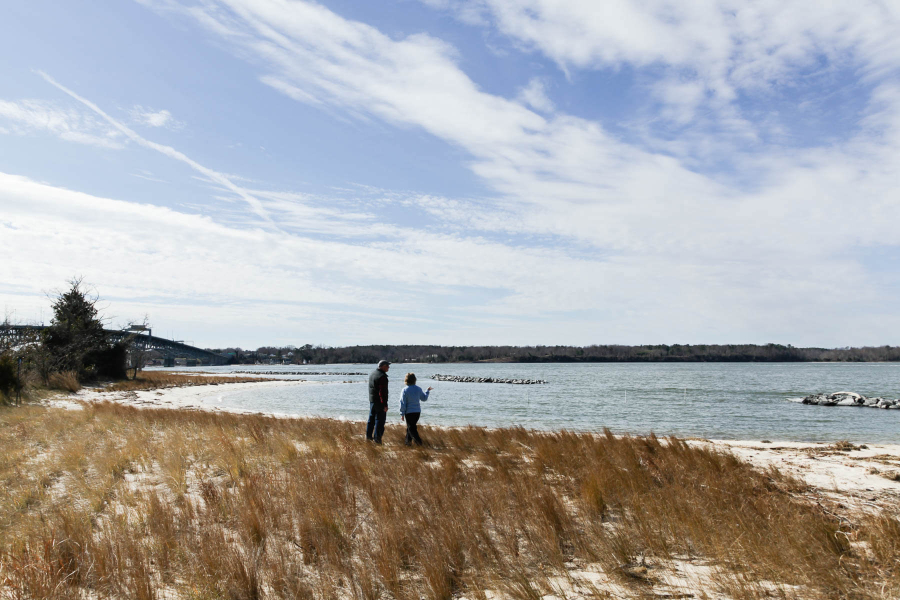
Owning and maintaining waterfront property can be an expensive commitment. Residents across the Chesapeake Bay watershed must contend with shoreline erosion and rising sea level, while adapting to environmental regulations that protect water quality. One strategy for tackling all of these issues has gained increasing popularity: living shorelines that not only protect human property, but also utilize and even enhance the Bay’s unique natural habitat.
Scott Hardaway and Karen Duhring are marine scientists and living shoreline experts at the Virginia Institute of Marine Science (VIMS), which sits at the mouth of the York River in Gloucester Point, Va.
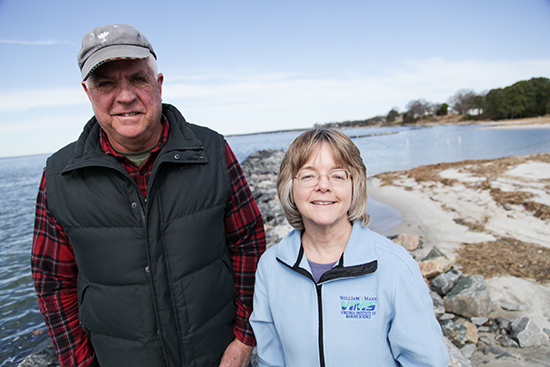
Scott Hardaway began working for VIMS in 1979, and is now the director of the Shoreline Studies Program. He is a leading authority on the design and implementation of “headland breakwaters,” a living shoreline technique that creates protected “pocket beaches” like those constructed at VIMS in 2010.
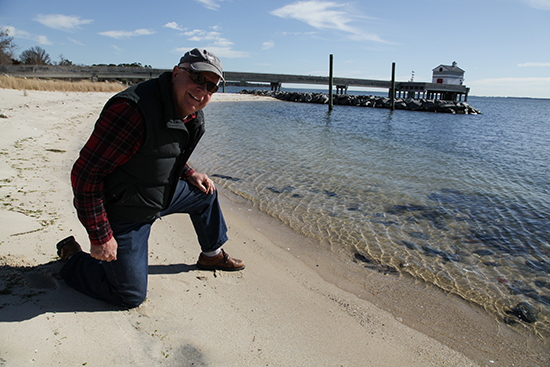
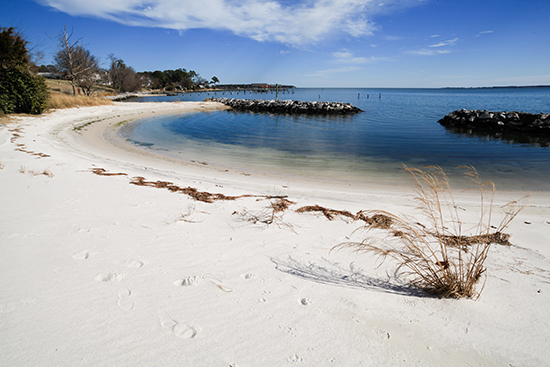
Headland breakwater systems are built using large stone structures called “headlands,” which sit offshore and disrupt the incoming waves that can cause shoreline erosion. Mathematical formulas determine the necessary angle, shape and placement of each headland. Wider gaps between breakwaters create long, narrow pocket beaches, while narrow gaps create wide, circular beaches.
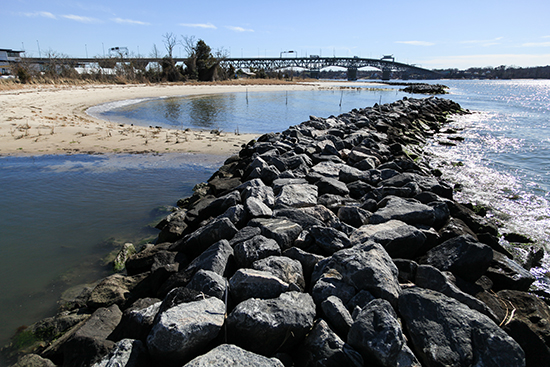
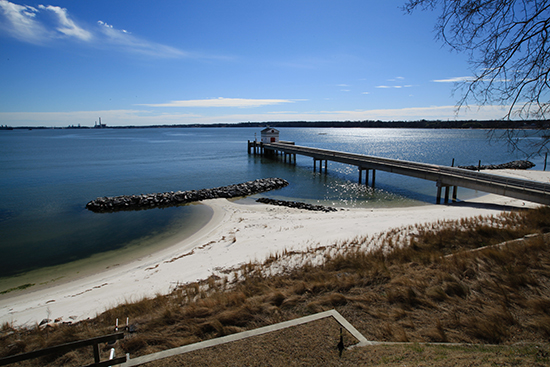
Their wave-blocking action creates a calm, shallow lagoon between the breakwaters, which are connected to shore by a sandbar called a “tombolo.”
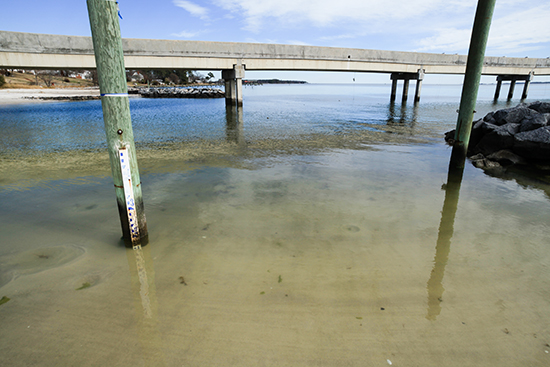

Additional sand must be brought in to form the tombolo and stabilize the beach. This raises the cost of these projects, but is critical to the final phase of construction: planting native beach and dune vegetation.
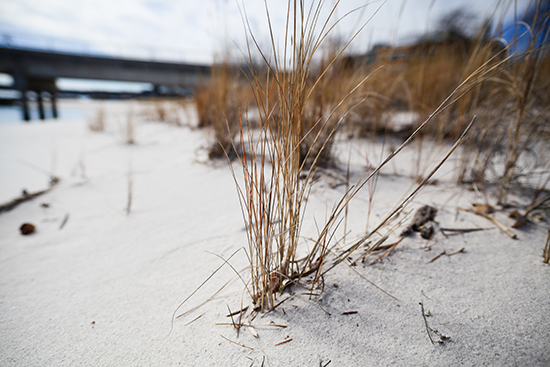
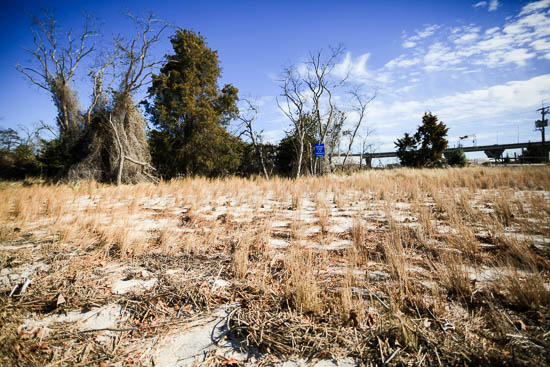
Karen Duhring is an educator and researcher at the VIMS Center for Coastal Resources Management (CCRM), where she helps manage and monitor living shoreline projects.
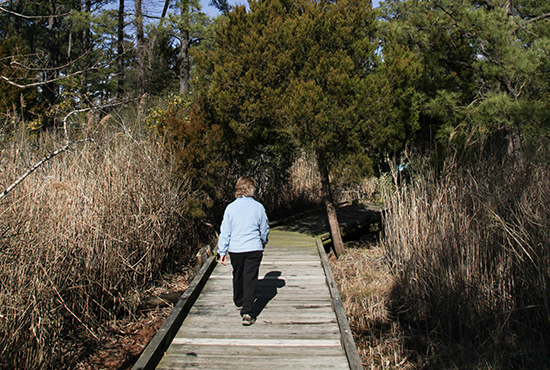
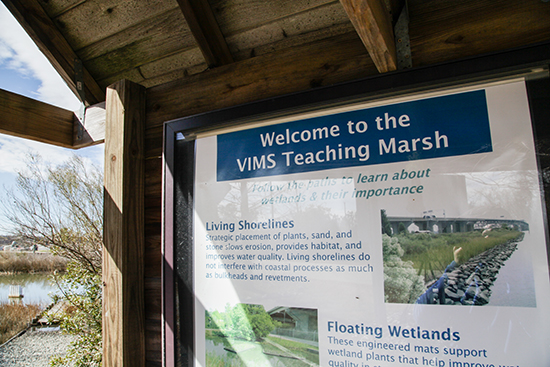
According to Duhring, on-shore plantings serve key ecological functions that enhance the effectiveness of living shorelines. On sandy beaches, plant roots stabilize loose material and improve water quality, as they filter pollutants from upland runoff.
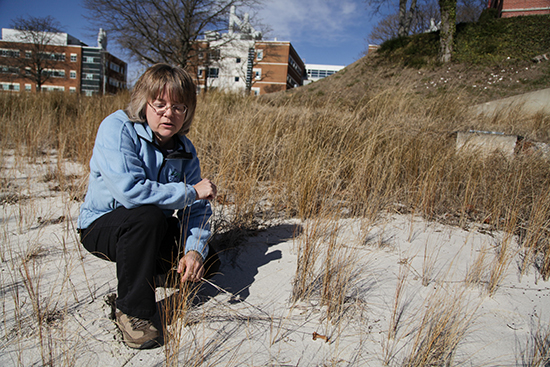
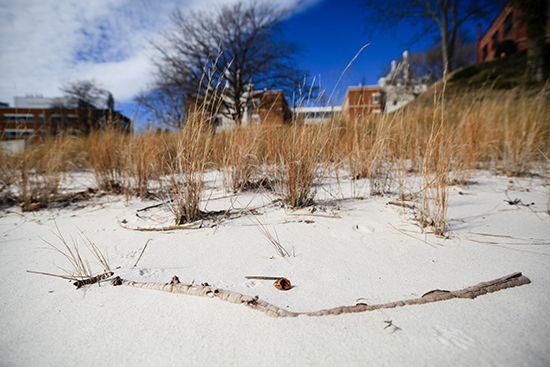
Living shorelines use native plants—smooth and saltmeadow cordgrass here in the Bay—that have adapted to thrive and reproduce in a specific environment. Once established, cordgrass recruits naturally along the beach, dispersing seeds and rhizomes that spread horizontally beneath the sand to establish new plants in empty areas.
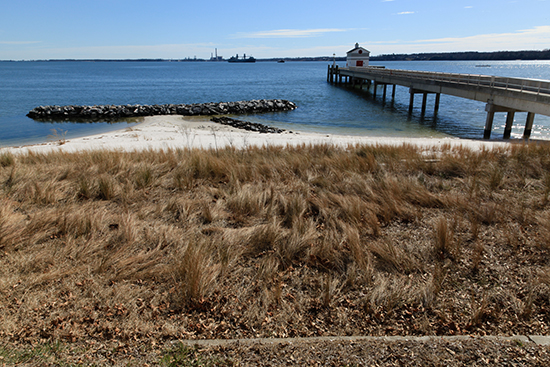
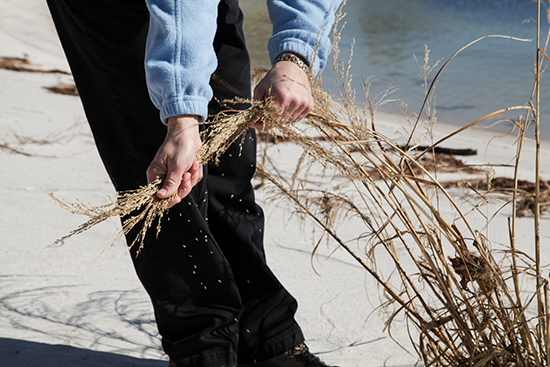
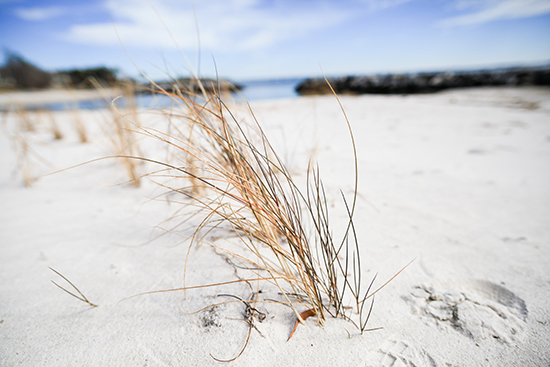
Beach plantings are susceptible to damage from foot traffic, so precautions should be taken to prevent the trampling of plants. Access restrictions allowed for more expensive plantings on the VIMS western shore, while heavy use from research activities limited plantings on the other.
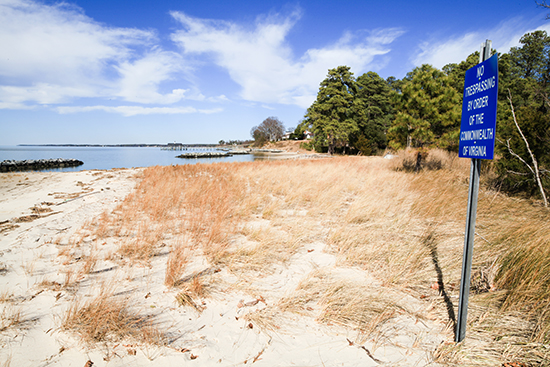
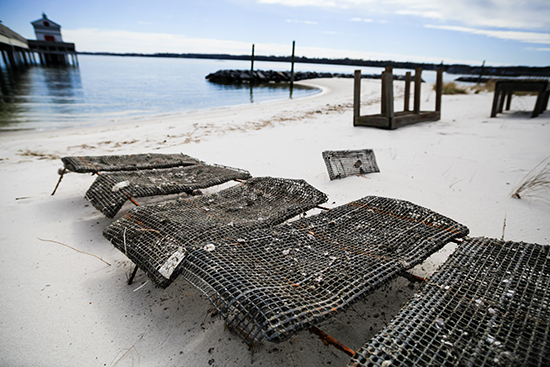

During high tides, organic material washes onto the beach and provides nutrients for the growing plants, which in turn provide habitat and food for native wildlife.
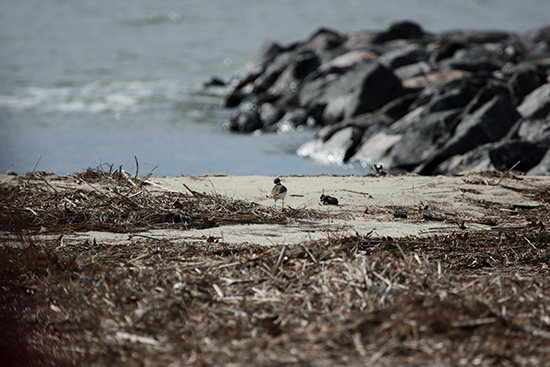
Headland breakwaters themselves also provide habitat for crabs, mollusks and other aquatic species that thrive on underwater reefs. Along the VIMS shoreline, oysters have settled on the granite rocks to form the beginnings of a complex reef community.
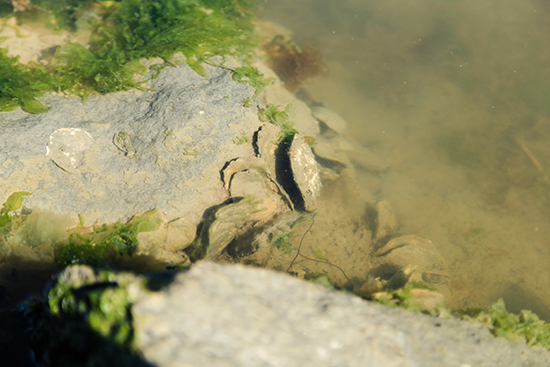

According to Hardaway, headland breakwaters are not always the perfect solution for every sandy shoreline. Whenever possible, existing habitat for submerged aquatic vegetation and shellfish should remain undisturbed. While the costly structures do come with some tradeoffs, they also offer invaluable protection for human infrastructure. The once-vulnerable VIMS shoreline, for instance, has withstood Hurricanes Irene and Sandy—thanks to its headland breakwaters.
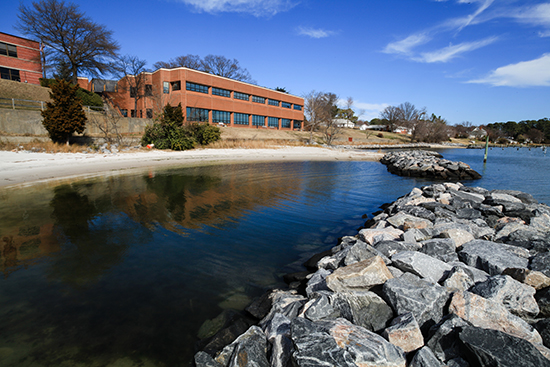
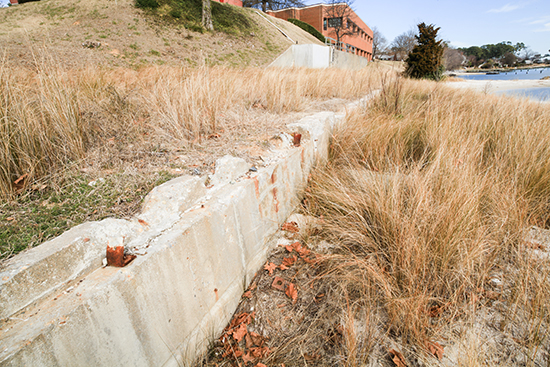
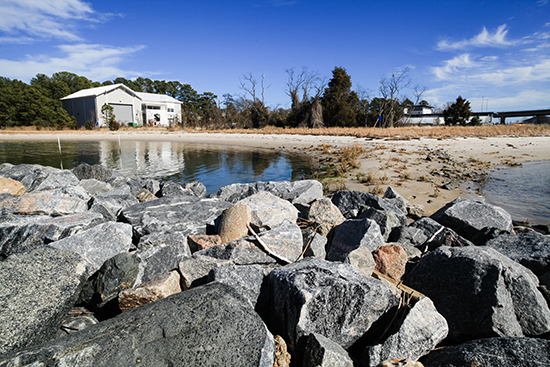
As the living shorelines at VIMS demonstrate, projects such as these—which successfully address the needs of both humans and nature—are critical to Bay restoration. Through the work of experts like Hardaway and Duhring, these living shorelines continue to serve both practical and educational purposes, teaching the public how we can responsibly manage our natural resources today in order to preserve them long into the future.
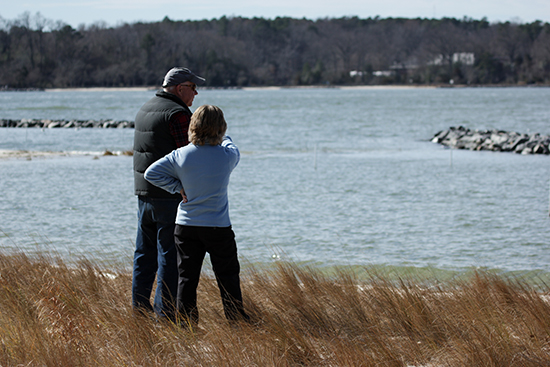
View full-resolution photos on the Chesapeake Bay Program Flickr page.

Comments
Shoreline erosion can be a major problem, not only in terms of property loss, but also as a source of pollution (sediment) discharge into the rivers and ultimately the Chesapeake Bay. The living shorelines strategy was introduced years ago as an alternative to traditional methods such as bulkheads, riprap, and bank grading. Unfortunately, in many cases, plantings alone, without the benefits of breakwater structures, were not successful. Congratulations to VIMS for demonstrating the integrated design--and successful implementation of the living shoreline concept!
Great photo essay of the great work accomplished by Scott and Karen at VIMS! Very impressive results!
This is great info for waterfront homeowners and prospective waterfront buyers. My company (Sun Wild) has been involved in several projects like this and have seen dramatic results. Scott Haschen (Waters Edge) grows Spartina and other wetland plants local to Easton, Md. He is a great asset to the waterfront planting community. We use him for all our living shoreline plantings.
Thank you!
Your comment has been received. Before it can be published, the comment will be reviewed by our team to ensure it adheres with our rules of engagement.
Back to recent stories